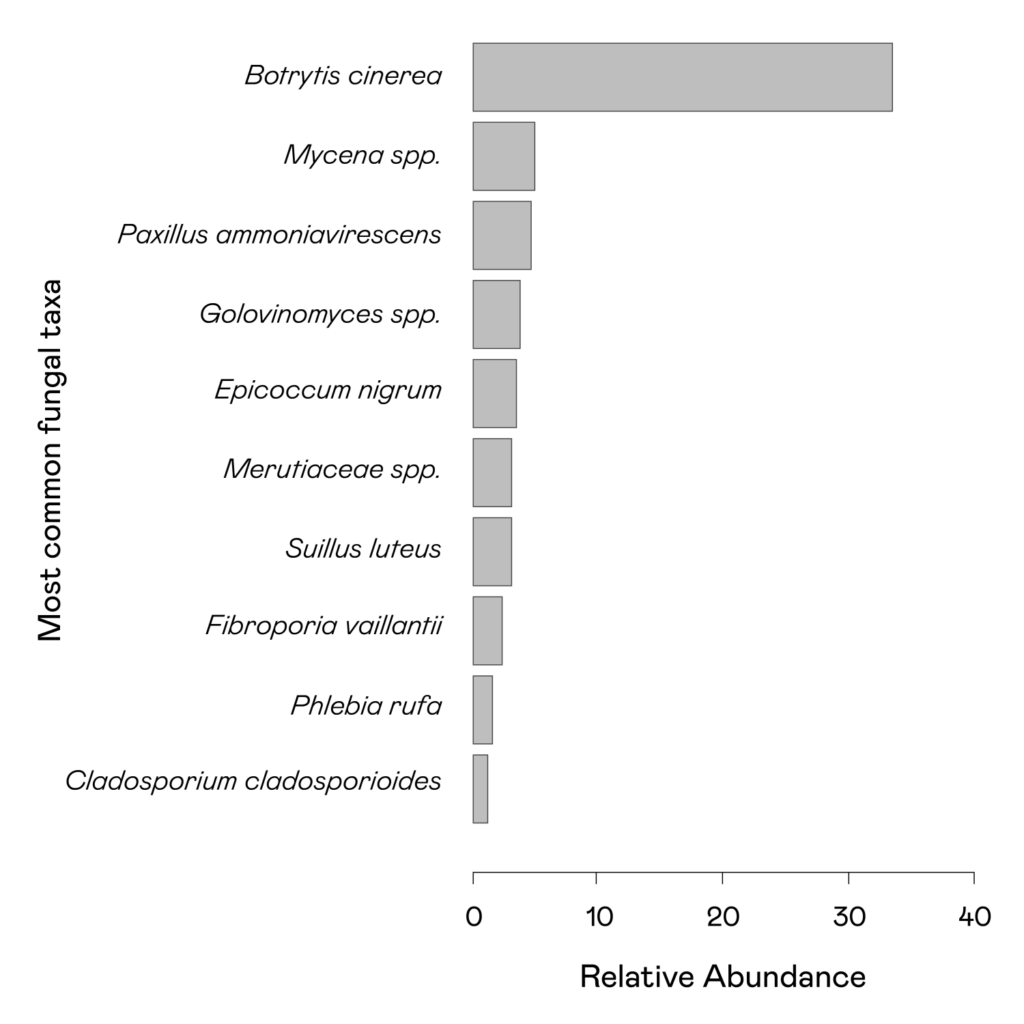The Dreaded Bud Rot
What it is and how you can prevent it

Everyone who’s grown cannabis, especially in New England, has heard of the dreaded “bud rot.” When you’ve spent weeks carefully tending to your crop, pruning, defanning, and feeding just the right amount of carefully blended nutrients, there is nothing worse than inspecting your beautiful colas to see that dreadful browning of your bud coupled with the tell-tale gray fruiting bodies associated with bud rot. What’s causing this to happen?
The answer is botrytis cinerea, a ubiquitous mold that thrives inside cannabis inflorescences. We’re going to spend a little time talking about botrytis – what it is, what you can do to prevent it from destroying your crop, and why the same organism that causes devastating bud rot in cannabis is sought after in the wine industry, where it is given a much sweeter name – “noble rot.”
What is Bud Rot?
The organism responsible for bud rot, botrytis cinerea, has an enormous host range, impacting over 200 different species ranging from crops used to produce fibers and oils, to horticultural crops like broccoli, strawberries, and beans. The mold is commonly known as “gray mold” to gardeners, and if you purchase berries from the grocery you’ve almost certainly seen it pop up in your fridge on that small carton of blueberries you forgot about two weeks ago.
Cannabis, despite our greatest efforts, often falls to the same fate as those neglected berries. Research conducted by the U.S. Department of Health and Human Services, the Centers for Disease Control and Prevention, and the National Institute for Occupational Safety and Health in their report “Evaluation of Potential Hazards during Harvesting and Processing Cannabis at an Outdoor Organic Farm” identified botrytis cinerea as the main fungal species impacting cannabis by a wide margin.

During their investigation, researchers noted that botrytis cinerea made up almost 60 percent of fungi detected in personal air samples. The relative abundance chart seen to the right puts this into perspective, demonstrating that botrytis cinerea was sequenced more than the next nine species combined. This is problematic for a few different reasons, number one being the medical risk this fungus exhibits to cannabis consumers and cultivators, followed by the devastating crop loss associated with an uncontrolled outbreak.
Despite its renown as an organism that devastates agricultural industries, botrytis is sometimes used intentionally in the wine making process. If applied during the last 10-20 days of grape harvest in extremely specific locations with appropriately alternating cold humid nights and warm dry days, the mold can alter wine grapes, causing them to become significantly sweeter while taking on unique flavor characteristics. This process is not without its own issues though, as a form of hypersensitivity pneumonitis known colloquially as “wine grower’s lung” is common in agricultural workers exposed to large amounts of botrytis during this noble rot process.
Preventing Bud Rot
If you’d like to avoid losing your harvest to bud rot, or becoming a victim of “wine grower’s lung,” there are a few steps you can take to reduce the incidence of botrytis breakouts in your grow. The mold is most active in high nitrogen plant tissues, meaning if your cannabis is producing dark green, soft, sometimes warped leaves, you might reduce the risk of bud rot taking over by simply changing how you feed.
Aside from nutritional adjustments, you may need to tweak the environment your cannabis is in by adding additional air circulation or dehumidification. While maintaining a decently humid environment for your cannabis crop can improve rates of carbon uptake leading to higher yields, a humid environment is also a perfect breeding ground for botrytis, which will reduce all of your hard work down to nothing. On the same note, through careful pruning and defanning you can remove pockets of extreme humidity and allow a clear path for air circulation to move through your plants, pulling moisture out of those dangerously humid areas and giving your plants a better chance at survival.
Lastly, if all else fails, you may need to investigate growing different strains of cannabis that are more suited to mature in locations where botrytis is unavoidable. Everyone wants to grow big football sized colas of cannabis, but if you have chronic bud rot, varieties of cannabis with smaller golf-ball sized inflorescences might be a better choice.
